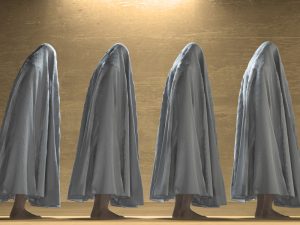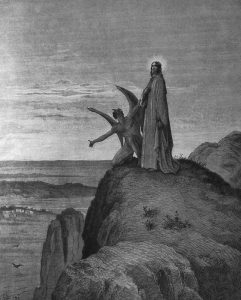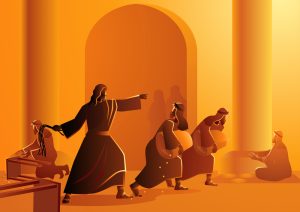One of the most destructive and maladaptive forms of coping is self harm. Individuals who hurt themselves are not necessarily hoping to die but hoping to punish or escape reality due to past trauma, abuse, guilt, shame, anxiety, depression or mental disorder. Suicide can grow from it so risk assessment is key, as well as the fact, one can accidentally kill oneself due to the dangerous behavior.

Many who suffer from self harm are merely hurt individuals trying to escape reality. They need guidance, counseling and better coping strategies to deal with the emotions and trauma they are dealing with. Clinical Counselors deal with those who commit self harm and will usually discover a diagnosis as to the core reason why self harm is occurring. From a spiritual perspective, pastoral and Christian Counselors can also add moral and religious guidance.
The article, “What Is Self-Harm?” by Hope Gillette looks closer at the nature of self harm, the causes, what it entails and how to replace self harm with better coping strategies. She states,
“When you engage in NSSI, it replaces psychological distress with physical pain, pulling you out of your unhappy thoughts. The trauma to your body also generates a release of pain-killing endorphins, which can give you an all-around, feel-good boost. Being able to escape your thoughts and feel better at the same time can lay the foundation for self-harm to become compulsive and ritualistic. It can become that thing you go to whenever you need to de-stress.”
“What Is Self-Harm?”. Hope Gillette. April 11th, 2023. Healthline.
To read the entire article, please access here
Self Harm

As stated, self harm is not intended as a means to kill oneself, but to punish or escape mental pain. Individuals who suffer from self harm tendencies look to escape pain from unresolved trauma. Whether abuse, or severe violence, they look to the physical pain to distract themselves from the mental anguish associated with the unresolved trauma. This is also common with those who suffer from Borderline Personality Disorder as well as severe anxiety and depression. The physical pain becomes an outlet or escape from the mental anguish.
In other cases, it is a form of punishment to the person. One may feel extreme shame or guilt and feel the need to inflict punishment upon the body. Those who are sexually abused are made to feel guilty for the abuse by the abuser and will commonly hurt themselves as punishment.
In essence, this maladaptive form of self abuse without suicidal intent is an attempt to cope with pain and unresolved trauma. Individuals will cut, burn, bruise, bite, poison and engage is dangerous activities to cope with the primary issue. It is essential that family or friends identify these injuries or change in behaviors so they can be properly addressed
Unfortunately, many who engage in self harm will attempt to disguise or hide their injuries with longer sleeved shirts or attempt to withdraw more from public and become more private than usual. If behavioral changes occur and odd interests emerge that include items or medications to treat injuries, then one should further investigate the possibility one is engaging in self harm.
Emotional Self Harm
Individuals however can also harm themselves emotionally BEYOND physically. Numerous dangerous and high risk behaviors can also manifest. Individuals may engage in unsafe sex, remain in unsafe relationships, engage in drug abuse, or take high risks with fighting, driving, or various activities. In addition, individuals may indulge in negative talk about oneself in which abusive names or self labels are applied to oneself. In other cases, individuals may self restrict as a form of punishment by denying oneself food, water or sleep.
Cognitive distortions are also another way an individual may be too hard oneself. Individuals who magnify the situation, jump to conclusions, over compare, label oneself, over assume, disqualify oneself, minimize oneself or always speak in the extremes, can fall victim to self punishment and emotional torture.
Ways to Overcome Self Harm
Individuals who suffer from self harm usually require Dialectical Behavioral Therapy which focuses on intense emotions and ways to manage them. The therapy was primarily developed for those suffering with Borderline Personality Disorder and is a subdivision of Cognitive Behavioral Therapy. There are also other special therapies that deal uniquely with self harm itself and how to better manage the emotions that lead to it
Obviously better coping strategies are also essential. In therapy, individuals can learn different ways to deal with negative emotions from unresolved trauma and abuse. Individuals can be introduced to meditation, deep breathing, types of prayer, journaling, artistic expression, exercise, reading or finding a good friend to confide in.
Christian Counseling and Self Harm

Beyond the clinical aspects that treat unresolved trauma and correct imagery of self through therapy and dialogue, Christian Counseling looks to help the person understand key concepts regarding Christ and self. First, it teaches that everyone is dignified and born in the image and likeness of God. Hence, self harm shames the worth of the human person. It also assaults the body which is a temple of the Holy Spirit. Second, Christian Counselors can emphasize how much Christ loves and forgives all things in the past and looks to heal and bring peace to the chaos, consolation to the desolated and security to the anxious. Christian meditation and focus on the love of God and the value of the human person are key concepts that can help individuals find self worth and better ways to cope with trauma and pain.
Please also review AIHCP’s Christian Counseling Certification and see if it matches your academic and professional goals. The program is online and independent study and open to qualified professionals seeking a four year certification
In addition, AIHCP also offers certifications in Crisis Intervention Counseling and Grief Counseling. Both these programs can help train professionals deal with the issue of self harm and help those in intense pain, grief and crisis itself.
Bibliography
“What Is Self-Harm?”. Hope Gillette. April 11th, 2023. Healthline.
Additional Resources
“Self-Harm”. Psychology Today Staff. Psychology Today. Access here
“The Self-Harming Brain”. Terri Apter, PhD. January 6th, 2020. Psychology Today. Access here
“Biblical Advice For Those Struggling With Cutting and Self Harm”. Michael Williams, PhD. What Christians Want to Know. Access here
“There’s a Scientific Reason Why Self-Harm Makes Some People Feel Better”. Colin Schultz. October 16th, 2014. Smithsonian Magazine. Access here





















